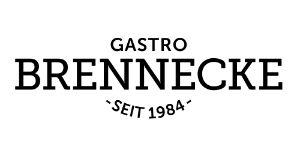Why actually filter wine?
Fun fact: In the past, wines were simply not filtered at all - winemakers simply didn't have the means to do so. Instead, they waited until the fines settled to the bottom of the barrel. Today, turbidity and particulates are suspect to many wine lovers. The wine should be clear - unclouded, sparkling.
However, the fact that wines are filtered today is not only for aesthetic reasons. Filtration makes the wine more stable in the bottle, prevents subsequent turbidity and also reduces the risk of secondary fermentation. In addition, filtering often improves the taste.
To be sure, experts' opinions differ as to whether it affects taste - some insist that not removing turbidity does not harm wines. However, turbidity actually often makes wine taste pappy and stale. That's why we recommend that amateur winemakers filter wine to get the best possible taste experience.
Methods for wine filtering
The simplest method of filtration is self-clarification. Here, one simply waits until the suspended solids have settled by themselves at the bottom of the vessel. There are many points in favor of self-clarification:
-
It is the gentlest method of filtration
-
the wine can mature further and develop a rounder taste
-
no extra equipment is needed: as soon as the suspended solids have settled, the wine can simply be lifted off with a wine lifter.
However, the self-clearing method also has some disadvantages:
-
it takes an incredibly long time
-
it does not work with all wines: What can work very well with young fruit wine, may spoil the whole result with complex flower wine. After all, if wines are left to rest too long before bottling, they risk losing their aroma.
Alternatively, there are methods of wine clarification that may take a little getting used to at first reading: Clarification with egg white, isinglass, gelatine or the vegan variant agar agar. Here the Fining agents (e.g. gelatine) is added to the wine and settles together with the turbid matter at the bottom of the fermentation balloon. Thus, gelatine and turbidity can be removed from the wine together.
The disadvantage of fining agents: They often rob the wine of a lot of mass. This is not a problem when working with larger quantities of wine. However, it is not worth using them with small quantities, as there is hardly any wine left. Here, filtering is a clever alternative. But here, too, there are different methods:
-
Filtration with paper or coffee filters: Here, the wine is passed through a funnel (e.g. a spiral funnel) and filtered in a similar way to making coffee. How efficient this method is depends on the quantity and turbidity of the wine - for many liters this filter method is rather unsuitable. In addition, this method requires great care, as the wine is in contact with oxygen for a long time and there is a risk of oxidation. So: work quickly and carefully is the motto.
-
Filter with pressure filters: For amateur winemakers, filtering with pressure filters is the most common and simplest method. Here, filter sheets are placed in a holder on the filter. The wine is pressed through the filter under pressure, so that small particles, suspended matter and residues stick to the filter layers. Pressure filters are available, for example, as hand pump devices.
After filtration: Off into the bottle!
Once the wine is finally as clear and transparent as desired, it can be bottled. Here, too, wines should come into contact with as little oxygen as possible. Of course, contact with oxygen is unavoidable. To reduce the risk of oxidation, wines should first be lightly sulfurized before bottling.
Equally important: the corks and bottles must be clean, dry and sterile!
Funnels are suitable for bottling itself. But be careful: the bottles should not be too full. A finger's width of air in front of the cork is recommended. A practical alternative is a filling pump, preferably in conjunction with a wine lifter: it stops automatically as soon as the bottle is full. Put the cork on - done!
Do you have any questions about filtration? Then please do not hesitate to contact us!












